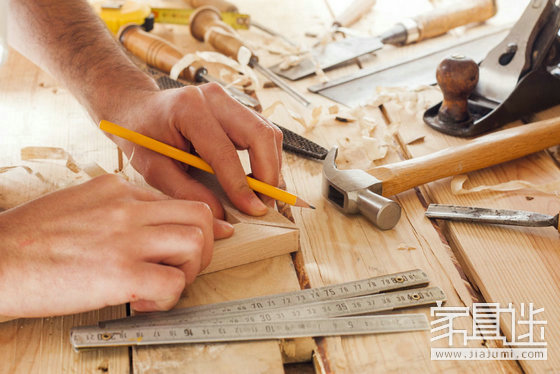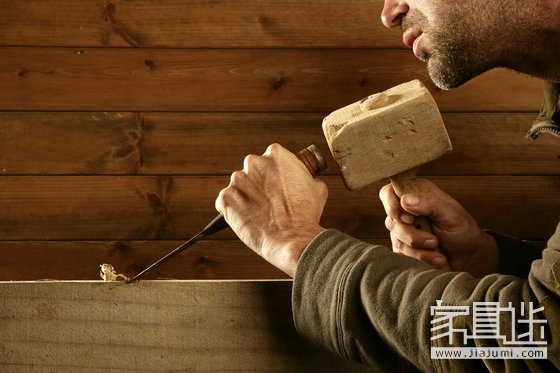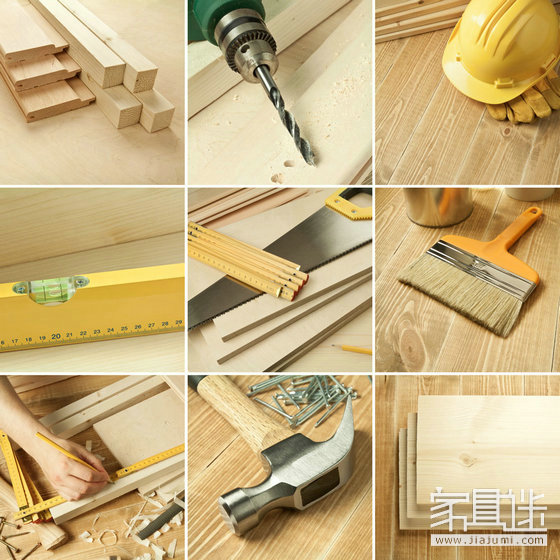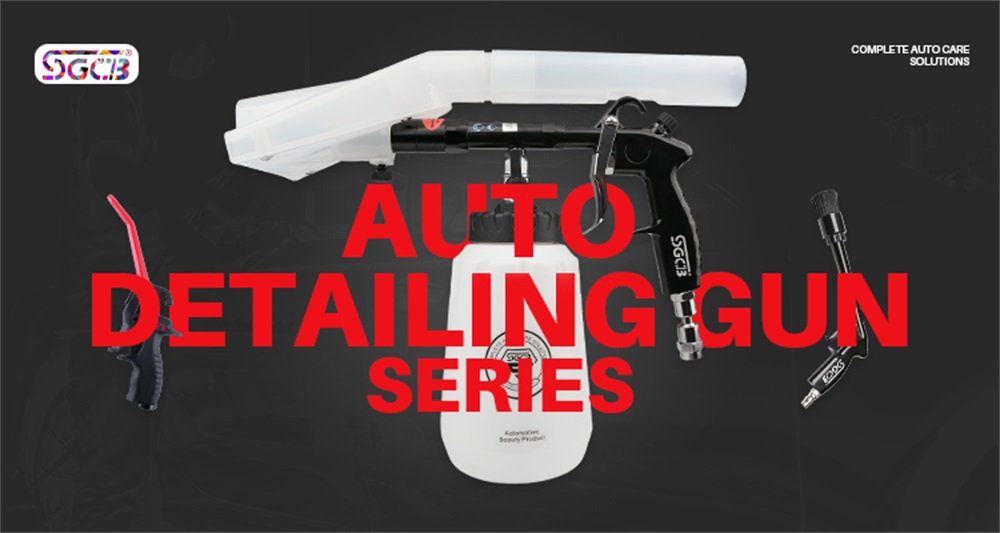The so-called "masters lead the door, practice by the individual." Traditional woodworking takes a lot of time to master the tricks skillfully. The axe sawing and chiseling seems to be simple, but it is not easy to get started, and it is more difficult to handle it. The master teaches hand-to-hand, and the woodworking proverbs are also passed on from mouth to mouth. They are catchy, vivid, and easy to remember, which is of great benefit to us to learn traditional woodworking.
First, about woodworking

- Long carpenter, short blacksmith, not long or short is a stonemason.
Different processing objects are different in different industries. Woodworking ingredients and some processes (such as the length of the transparent, cabinet doors and drawers, etc.) should have a certain margin, Ning Chang should not be short, Ningda should not be small.
- Big carpenter's axe, small carpenter's saw.
Traditional woodworkers are generally divided into three categories, the roughing of the house, also known as the big carpenter; the joiner who makes the furniture, also called the small carpenter; the hoop barrel is called the barrel craftsman, also called the round carpenter. It is about the basic skills of different types of carpenters. Big carpenters need to level the logs, the skills of the axe and the axe are the most important. The doors and windows and furniture made of small wood are correct and the seams are tight, which not only affects the appearance, but also relates to the inherent quality and service life. The quality of the small carpentry craft is evaluated by the quality of the shoulder seams in the common 榫 joint. Saw is particularly important in many operations such as planing, chiseling, sawing, and cutting.
- The material of the little carpenter, the line of the big carpenter.
Planing is an important basic skill of a small carpenter. The small carpenter draws the line based on the two large paintings of the material. The materials on both sides are qualified and the future lines can be accurately aligned. The line accuracy can guarantee the machining accuracy. Planing materials are required to be straight, square and flat. One eye looks at the other end from the end of the material. If it is a straight line, it is straight. The square is measured, and the plane is measured. The ruler measures it and matches the straight edge. In this way, the material is qualified.
The big carpenter is subject to the line. The line has a center line, a horizontal line, and a size line. Beams, masts, cymbals, cymbals, etc., must first pop up the center line, including the head-to-head cross line and the center line, and then operate according to the center line. When the construction is staked and the large wooden components are crossed, horizontal lines and other dimension lines are also ejected. Damu Engineering has these lines to build. Therefore, the line is a key part of the processing and construction of large wood.
- The carpenter looked sharp and the bricklayer looked at the side.
"Point" is the angle. The lofting and production of the shelf, the installation of the planer according to the cutting angle, the production of the tweezers, the honing of the serrations, the slashing of the furniture, etc., will have various corners. The tip also refers to the quality of the work of cutting the shoulder seams in the combined operation of the woodworker to measure the level of the craft. The quality of the splicing is not only the quality, but also reflects the knowledge and operation level of the woodworking in the aspects of turning, drawing, selecting materials, drawing lines and processing. It can be seen that these corners are the key to woodworking technology.
- The carpenter's axe bricklayer's knife, the bachelor's baggage girl's waist.
These are not easily touched, and the tools that describe the craftsman are not easily loaned to others.
- One second and three lines.
A measure of the basic skill of a carpenter. The planing material should be flat, smooth and square, and the line should be accurate and correct. The blinking should be square and vertical.
The eucalyptus straight carpenter bends the wood, and the carpenter goes to the bend and becomes a useful material. Carpenters should choose materials reasonably, use inferior materials, and improve the utilization rate of wood.
- Three years of learning, three months of art, when to enter the art, see your craft.
In the old days, the woodworkers had to learn "art three years". In three years, they mainly used the basics, sawing and cutting. After three years, it will be extended for a few months to an important festival. During this period, the master will actually teach the apprentice to draw lines and make techniques.
Second, about wood

- For thousands of years, wet for thousands of years, dry and wet for two or three years.
Wood moisture content has a great relationship with the age of wood. When the moisture content is small or large, the wood has a long service life, and when it is semi-dry or semi-wet or wet when dry, the wood is easily decayed.
- Dry bricks are not on the wall, wet wood does not make the door.
Wood is easily deformed during the drying process, and the furniture should be selected as dry wood.
- Dried maple wet willow.
The sawsmith's maple and wet willows are hard to see.
- Cross-pushing
The bearing capacity of the wood in different directions is different. The bearing capacity of the horizontal and vertical directions of the wood is about 1:10. Pay special attention to the size of the lateral force.
Third, tools and use

(a) axe
- Fast saws are not as blunt.
Cut the edge with an axe. When the texture of the wood is straight, the side can be cut into three or two, and the efficiency is higher than the saw.
Related reading: What tools are used for foreigners to make furniture?
- I have a three-year plan for the axe.
It is not easy to master the plane. It is more difficult to play the axe than to use the planer.
To judge the wood, cut the texture of the wood before cutting the material, and take the axe from the direction of the smooth.
(two) saw
If you are pulling a saw like a scratching saw, don't worry, pull it gently and rhythmically.
- Whipping fast cattle, sawing both ends.
Steady and steady, don't kill it lightly, don't slash it, keep it light, straight, kill, twist the string and use the saw to be steady, light and straight.
The teeth should be pointed, the material should be evenly distributed, and the sawing teeth should be sharp and the material is even, so that the saw can be used.
- Lightly lift the bar, kill the saw, and the saw does not run empty.
It should be light when sawing, and relatively force when sending saws.
If you don't want to run the line, you should keep your eyes open when you strike the saw with two wires and make the saw blade coincide with the ink line.
(three) planing
- Set up a nine-bedroom, do not push away; set a one-bedroom, effortless.
The angle between the planer and the planer is critical. If the vertical side of the right triangle is one inch, the horizontal side is 9 points, and the planer is placed on the oblique side. The angle between the two right-angled sides at 1:0.9 is 48.01 degrees, and at 1:0.8, it is 51.34 degrees. The angle is small, the plane can eat the force, the use is more labor-saving, but it is easy to smash; the angle is large, it is hard to push, but it is not easy to smash.
Adjust a line of planer, do not slant into a line of planing blade to expose a line of the bottom, and parallel with the planer, not skewed.
In the recognition of the table, the wood grain is arbitrarily determined. Before the effortless planing, it is necessary to identify the surface and wood grain of the wood, and plan the plan to avoid smashing.
To plan the surface, first rush the line, first high and then low planing plane first plan out the convex part, after the planing concave part, after the flatness, then according to the ink line length cutting.
- Long planing is called, short planing is to jump.
The sharp planer is equipped with a long planer. When the plan is good, the whistling sound will be heard. The short planer is a happy jump on the wooden board. When you first apprentice, you won't use long planers. Master taught: "You can do it like a dog stretches."
The sawing woodwork case with the lowered head is flat, the front foot is lower, the planing is labor-saving, and the saw is reversed.
- Before the bow, the back should be stretched, and the shoulders are forced to move forward.
The left leg in the front should be slightly bent, and the right leg should be stretched straight. After the force, the two arms and the wrist push forward at the same time. Similar proverbs: the front legs are bowed, the hind legs are squatting, the chest is stiff and the chest is straight, and the sharps are like a gun, not shaking and not squatting.
After pushing the planer, the two arms should be straight and strong. No matter how hard the wood is, push it over.
The flat plane, the straight road start and the end, the plane should be flat, can not look up and bow. The direction of the planer should be consistent with the axis of the wood.
Although the slang is easy to remember, it also conveys many important points of knowledge. However, it is worth noting that these are not universally applicable truths. They often have applicable conditions. They are correct under the conditions of the premise. They must not be copied, not practical!

Compressed air is fed through a fine tip that oscillates at a high RPM (revolutions per minute) rate contained within a coned nozzle.

The high speed and pressure of the compressed air breaks up dirt and debris allowing for quicker, easier, and more effective cleaning.
Car Interior Cleaning Gun,Foam Cannon For Hose,Air Blow Gun,Carpet Cleaning Gun
SGCB COMPANY LIMITED , https://www.sgcbautocare.com